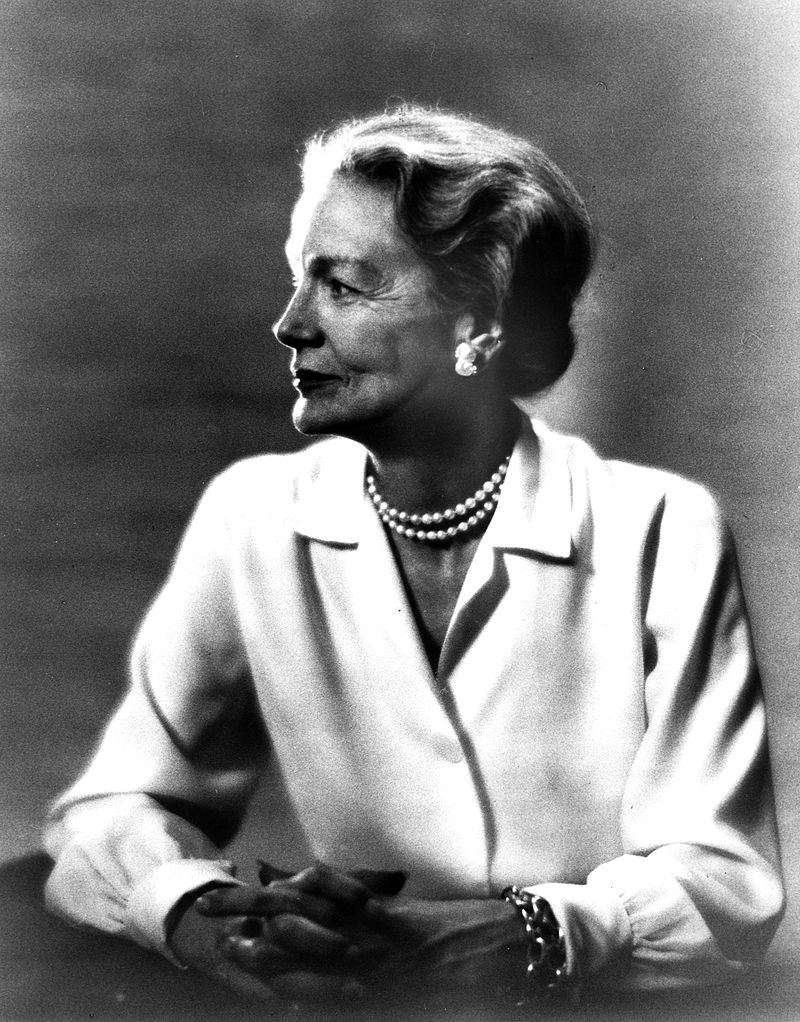Millicent Fenwick
Millicent Vernon Hammond Fenwick (February 25, 1910-September 16, 1992) was a Republican Congresswoman from New Jersey, “the Katharine Hepburn of politics,”[1] who served four terms in the U.S. House of Representatives. She was first elected to Congress in 1974 at the age of sixty-four. (Her election was portrayed in the media as a “geriatric triumph,”[2] remarkable given the advanced age of many leading politicians in Washington D.C. today.) Fenwick became, in the words of television anchorman Walter Cronkite, “the conscience of Congress.”[3]
Fenwick was born into a wealthy family and raised in New Jersey. Millicent’s mother died while a passenger aboard the ocean liner Lusitania, which was struck by a torpedo from a German submarine. Her mother had been traveling to Paris for the purpose of creating a hospital for World War I victims. Millicent was just five years old at the time.
Fenwick attended an elite school in Virginia but never received a high school or college degree, having left school to accompany her father to Spain where he served as the United States ambassador under President Calvin Coolidge. However, she studied at the New School for Social Research and Columbia University in New York, and spoke fluent Italian, French and Spanish. Before entering politics she modeled briefly for Harper’s Bazaar magazine, then worked as a writer and editor for Vogue magazine for fourteen years.
In the 1950’s she became involved in the Civil Rights movement. While serving in Congress she supported civil rights, the women’s movement,[4] human rights (she was a lead sponsor of the resolution creating the commission to monitor the 1975 Helsinki Accords, which eventually gave rise to the organization Human Rights Watch), and opposed government corruption and special interest groups. (She stated, somewhat ironically given the state of American politics today, “The money that is spent in elections is absolutely unconscionable – even if it’s private money. It’s true that one’s not corrupted by the expenditure of one’s own money, but to some extent the system is. We cannot have a system in which the only people you can count on for a vote that doesn’t look as though it might be a vote for a special-interest group are people with enormous fortunes.”) She fought for bathrooms for migrant workers (which won her the name “Outhouse Millie”), to protect car buyers from deceptive advertising, and to require funeral directors to itemize bills in advance. She was an advocate for gun control and prison reform.
Fenwick smoked a pipe (a habit begun after her doctor discouraged her from smoking cigarettes). She was in many other ways a colorful figure, purportedly inspiring the Lacey Davenport character in Garry Trudeau’s Doonsbury cartoon. She inherited a fortune when her father passed in 1956, but remained frugal, driving a Chevrolet in a community of luxury automobiles. She placed her assets in a blind trust to avoid political conflicts of interest.[5]
[1] Quote from her former aide Charles Millard in her New York Times obituary dated September 17, 1992.
[2] See Rutgers University Press review of Millicent Fenwick: Her Way, by Amy Schapiro, 2003.
[3] Ibid.
[4] While debating equal rights for women, Fenwick recalled a male legislator saying “I just don’t like this amendment. I’ve always thought of women as kissable, cuddly and smelling good”, to which she replied “That’s the way I feel about men too. I only hope for your sake that you haven’t been disappointed as often as I have.” See Wikipedia entry, Millicent Fenwick, retrieved on August 13, 2018 and New York Times obituary.
[5] New York Times obituary dated September 17, 1992.

